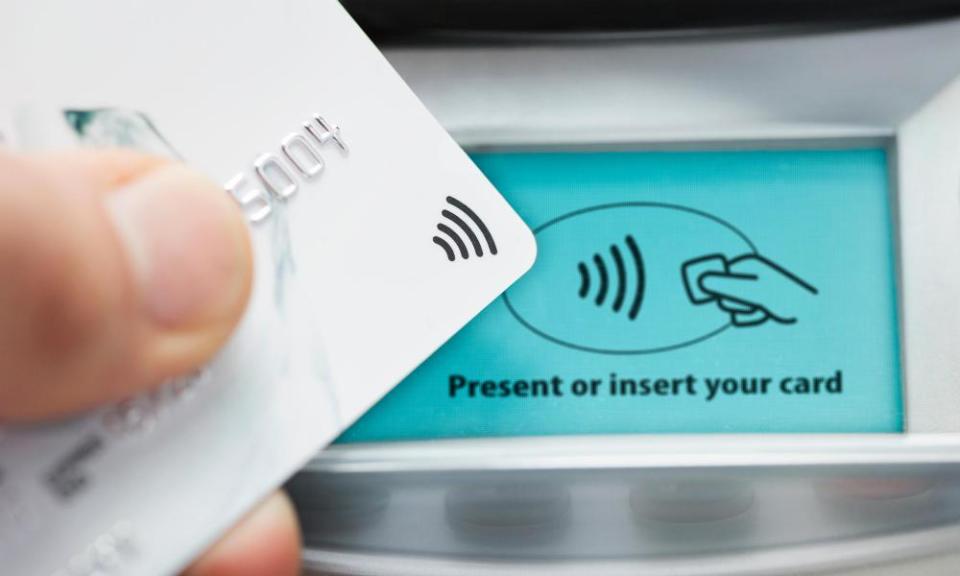On-demand pay a growing benefit – and concern – for small businesses

As employers – especially small employers – are struggling to bring back workers to their jobs, a relatively new benefit is becoming more attractive: on-demand pay.
Yes, that’s right: an employee gets paid on the day the work is performed. Think about it: your babysitter already gets paid right away, and so does the high-school kid who mows your lawn. So why not your employees?
Related: Dentists get creative in bid to recover from Covid downturn | Gene Marks
The appetite for this benefit is growing. According to an October 2019 survey of 1,180 American adults by the Workforce Institute at Kronos, a whopping 61% of employees across the healthcare, retail and manufacturing/construction industries said they should not have to wait until their scheduled payday to access their earned wages. More than half of all employees believe that on-demand pay is a more attractive benefit than additional paid time off.
So how does this work? It depends on how an employer designs its program, and the platform used.
For example, the payroll giant Paychex, through an existing partnership with the on-demand pay service PayActiv, offers their customers the ability to give their employees access to an amount equal to their net pay via a mobile application. DailyPay’s on-demand pay platform allows employees to access their pay and tips early and save it as they earn it. Ceridian’s DayForce creates a wallet where employees can request pay in advance of a pay date. Even, who recently announced it surpassed $2.5bn in payments, offers similar services via debit cards to the employees of their customers.
The providers of these services are telling employers that there are benefits for them too. “Our on-demand pay helps members with expenses that come up between paychecks – like childcare, groceries, or car repairs – so they can avoid overdraft fees and payday loans,” Even’s chief executive, David Baga, said in a statement. Even said 60% of employers report that financial stress affects their employees’ ability to focus and 65% of people think employers should do more to address financial insecurity.
“Amazon Prime, Lyft, Netflix, Venmo: the world has changed dramatically to usher in a generation of on-demand services, yet most organizations still think about payday as a rigid, set-in-stone process,” Joyce Maroney, executive director, The Workforce Institute at Kronos, said in a press release accompanying their survey.
“Employers who can ease the burden of financial stress by being more agile around payday and offering creative financial wellness benefits will be repaid by orders of magnitude in productivity and engagement.”
Even counts Walmart, Pitney Bowes, Humana and other Fortune 500 companies as its customers. That’s well and good for them because they’re big, corporate brands. But unfortunately, this growing trend presents a potentially significant problem for smaller companies, and for obvious reasons: providing this benefit is a cashflow challenge and for many smaller businesses, payroll is one of the biggest drains on cash and must be managed carefully.
“I’m not sure how I can do this,” one client told me recently when I brought up the idea. So here’s what I advised to her and a few of my smaller clients: given the competition for talent, they should seriously consider offering on-demand pay … but go slow.
For example, make it available for employees who have worked for you for at least 90 days so you can build a relationship. Make the benefit available only after a supervisor approves. Allow employees to take up to 50% of their pay before the payroll date. Have your employees commit to a regular amount – you don’t want to be guessing each week how much people are taking, as that could wreak havoc on your cashflow. Make the policy available to all hourly workers and make it visible, because if you’re doing this you should at least get the credit for doing it.
Labor shortages are an enormous headache right now for small businesses, and the problem will only get worse this year as the economy recovers and workers – many of whom are still collecting unemployment through September – slowly trickle back. Employers – particularly smaller companies who are competing with bigger brands – are simply going to have pay for better benefits … and contemplate on-demand offerings to pay them quicker, if they want to compete for the best talent. That’s assuming they can afford it.

 Yahoo Finance
Yahoo Finance 